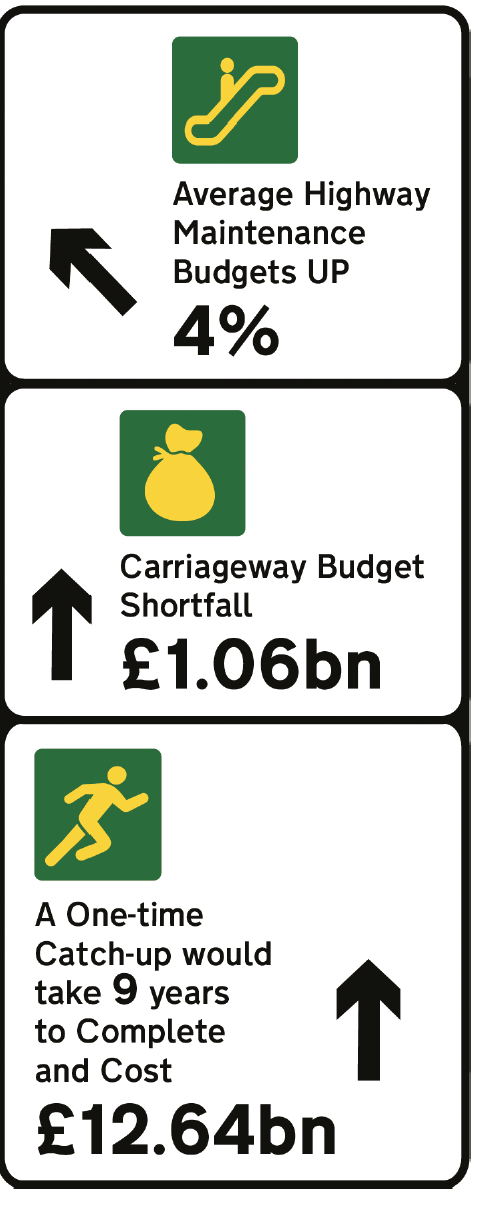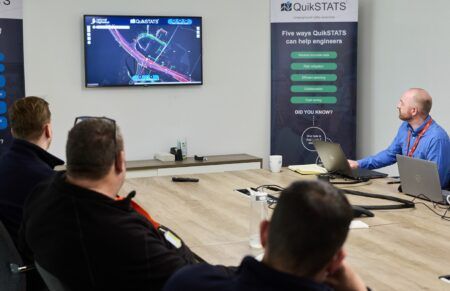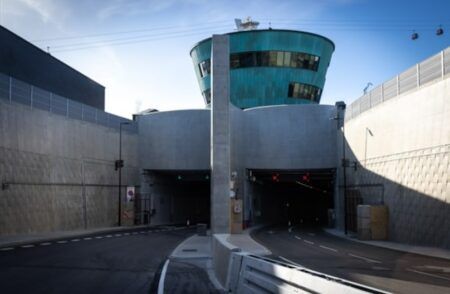The backlog* of carriageway repairs to fix local roads in England and Wales has reached £12.64 billion, compounded by increased costs caused by rising inflation, reports this year’s Annual Local Authority Road Maintenance (ALARM) survey.
The ALARM survey, by the Asphalt Industry Alliance (AIA), highlights the scale of the worsening issue faced by highway engineers who have to make difficult choices about keeping local roads open and safe versus improving overall conditions.
Despite an increase in average highway maintenance budgets (up 4% on 2020/21), the proportion being invested in the carriageway itself is down and the reported backlog of carriageway repairs has increased by almost a quarter (23%) on last year’s figure to £12.64 billion – or £61,700 for every mile of local road in England and Wales.
 Rick Green, AIA chair, says: “Local authority highway teams have a legal responsibility to keep our roads safe, but do not have the funds to do so in a cost effective, proactive way. As a result, while they report some slight improvements in surface conditions, the structure of our roads continues to decline.
Rick Green, AIA chair, says: “Local authority highway teams have a legal responsibility to keep our roads safe, but do not have the funds to do so in a cost effective, proactive way. As a result, while they report some slight improvements in surface conditions, the structure of our roads continues to decline.
“Although surface repairs have a part to play in extending the life of local roads, short-term fixes, including filling potholes, is indicative of a network that is ‘on the edge’ and less efficient and sustainable when it comes to materials usage and whole-life carbon emissions.”
This year marks the 27th successive ALARM survey, which received a record number of responses from 73% of local authorities in England and Wales. It reports local roads funding and conditions based on information provided directly by those responsible for its maintenance.
The findings of ALARM 2022, which relate to the 2021/22 financial year, show that in England and Wales:
• Local authorities would have needed an extra £1 billion last year just to reach their own target road conditions, before even thinking abouttackling the backlog of repairs.
• Almost one in five local roads could need to be rebuilt in the next five years – nearly 37,000 miles of the network.
• One pothole is filled the equivalent of every 19 seconds.
• Roads are only resurfaced on average once every 70 years.
Green adds: “The link between continued underinvestment and the ongoing structural decline and below par surface conditions of our local roads is clear. The country’s ambitions to encourage active travel, plus cutting waste and carbon emissions, will not be achieved with a short-term approach that can’t deliver a first-rate local road network.
“Recent government announcements regarding three-year spending on maintenance (for England) are a step in the right direction but don’t go far enough. To ensure we have a safe, resilient, sustainable network on which we can all rely, a longer-term approach and significant investment is still needed across the country.
“The longer it takes for the funding to be put in place to tackle the backlog of repairs, the more it is going to cost to put it right in the future. Four years ago, the AIA calculated that an additional £1.5 billion per year was needed for 10 years to bring local roads up to scratch. In the meantime, the network has continued to decline and ALARM 2022 indicates that an additional investment of more than £2 billion a year over the next decade is now needed.”
The full ALARM survey is available to download.
Lead image: AdobeStock





